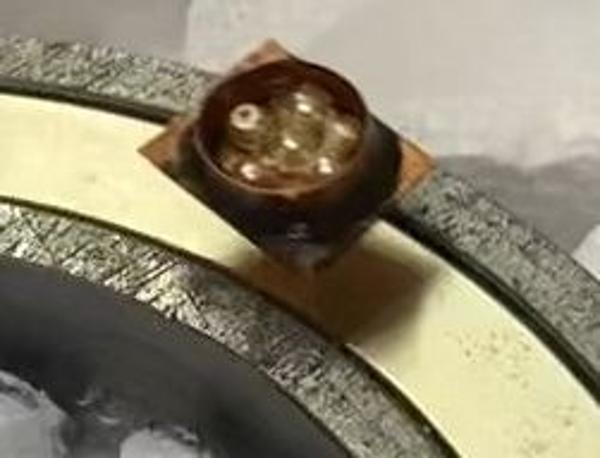The research fields related to noncontact positioning and transport of the free-standing cryogenic targets for inertial confinement fusion (ICF) applications are rapidly expanding. The operational principle behind these technologies is the magnetic acceleration of the levitating target carrier (or sabot) made from Type-II, high-temperature superconductors (HTSC). This is an alternative approach to ICF target delivery in comparison with conventional ones (such as pneumatic, electromagnetic, electrostatic injector concepts, etc.), which are useful for initial demonstrations, but advanced noncontact accelerator is desirable in the long run. Advantages here are the noncontact transport and thus the lack of wear and mechanical friction. This increases efficiency and reduces the maintenance cost that prolongs the service life of the target delivery system especially for its operation under high-rep-rate conditions.
A thorough analysis of the underlying physical principles when developing the noncontact ICF target delivery and the results obtained from computations and prove of principle experiments were published in High Power Laser Science and Engineering, vol. 10, Issue 2 (I.V. Aleksandrova, E.R. Koresheva, E.L. Koshelev; A High-Pinning-Type-II Superconducting Maglev for ICF Target Delivery: main principles, material options and demonstration models[J]. High Power Laser Science and Engineering, 2022, 10(2): 02000e11).

(a)

(b)
Graphic description: Demo experiments at reduced scale of a steady rotation along the limited PMG (OD 140 mm) of a simplest mock-up surrogating the HTSC-sabots. In (a): freeze-frames of cyclic movement of the HTSC-sabot under influence of a variable gravitational load (changing in the inclination angle from 3.30 to 00 with a rate of 2–5 Hz); temperature of the experiment is ~ 80 K; maximum HTSC-sabot velocity reached in 7.8 s is v = 1.46 m/s. In (b): HTSC-sabot during rotation (shown with magnification).
The paper discusses current target delivery strategies and future perspectives to create different permanent magnet guideway (PMG) systems for ICF target transport with levitation from target layering module to the reaction chamber of a laser-driven inertial fusion energy reactor. Credible solutions have been demonstrated for both linear and/or round PMGs, including ones with a cyclotron acceleration process to realize high-running velocities of the HTSC-sabot for a limited magnetic track. The paper presents the conception, simulation and experimental evaluation of the noncontact HTSC-sabot acceleration in different PMG-systems, which succeeded to overcome friction and demonstrate a way to use propulsion energy more efficiently. A well-documented experimental and computation results have shown that high-pinning HTSC magnetic levitation promises a stable and self-controlled levitation to accelerate the IFE targets placed in the HTSC-sabots up to the required injection velocities 200 m/s and beyond.
All this indicates that the HTSC-maglev concept can overcome the limitations of conventional acceleration technologies and become now one of the leading candidates for meeting the strict requirements of future ICF experiments.


